Embarking on the journey of understanding the intricate aspects of a natal chart can be both mysterious and enthralling. The celestial blueprint of our birth, the natal chart, holds the key to unraveling our true nature and potential. This comprehensive guide will shed light on the significance of the natal chart, the different types of aspects present within it, and how to interpret and analyze them. Whether you are a beginner seeking to explore the depths of astrology or a seasoned enthusiast looking to deepen your knowledge, this article will serve as a valuable resource to navigate the fascinating world of natal chart exploration.
Contents
- Understanding the Natal Chart
- What are Aspects?
- Interpreting Aspects in the Natal Chart
- Exploring Specific Aspects
- Benefits of Analyzing Aspects
- Common Misconceptions
- Tools for Analyzing Aspects
- Personalized Aspect Analysis
- How to Make the Most of Aspects
- Conclusion
-
Frequently Asked Questions
- 1. What information does a natal chart provide?
- 2. Can a natal chart accurately predict the future?
- 3. What are the major aspects in a natal chart?
- 4. How do minor aspects affect the interpretation of a natal chart?
- 5. Can aspects in a natal chart change over time?
- 6. How can analyzing aspects in a natal chart benefit an individual?
- 7. Are all aspects in a natal chart equally significant?
- 8. How can one work with challenging aspects in their natal chart?
- 9. What tools can aid in analyzing aspects in a natal chart?
- 10. How can aspects in a natal chart be used to enhance relationships?
- References
-
Frequently Asked Questions
- 1. What is the difference between a natal chart and a horoscope?
- 2. Can aspects in a natal chart change over time?
- 3. Are some aspects more influential than others in a natal chart?
- 4. Can aspects in a natal chart indicate compatibility in relationships?
- 5. How can analyzing aspects in a natal chart help in personal growth?
- 6. Can aspects in a natal chart determine career paths?
- 7. Are there any positive aspects in a natal chart?
- 8. Can challenging aspects in a natal chart be beneficial?
- 9. Are there any tools available to analyze aspects in a natal chart?
- 10. How can one make the most of the aspects in their natal chart?
- References
- Read More
Understanding the Natal Chart
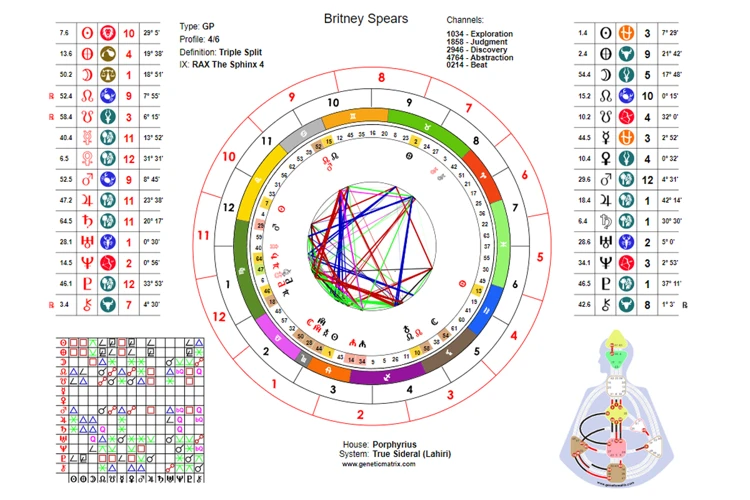
Understanding the natal chart is the gateway to unraveling the mysteries of our cosmic blueprint. A natal chart is a personalized map that depicts the exact placement of the planets at the moment of our birth. It serves as a snapshot of the sky and encapsulates the energies and potentials that shape our lives. Each planet’s position in a specific zodiac sign and house, as well as the angles they form with each other, holds valuable information about our personality, relationships, career, and life path. Delving into the natal chart allows us to gain deeper insights into our true nature and potential, enabling us to navigate life with greater self-awareness and purpose. This powerful tool unveils the complexities of our individuality, offering guidance and self-discovery. To comprehend the intricacies and significance of the natal chart further, we will explore the various aspects it encompasses. So, let’s dive into the depths of this celestial map and unearth the profound wisdom it holds.
1. What is a Natal Chart?
A natal chart is a snapshot of the sky at the precise moment of an individual’s birth. It is also known as a birth chart or horoscope. This unique astrological map serves as a celestial blueprint that captures the position of the planets in relation to the zodiac signs and houses at the time of birth. The natal chart is divided into twelve houses, each representing different areas of life, such as personality, relationships, career, and spirituality. Within these houses, the planets symbolize various energies and aspects of our being. For example, the placement of the Sun signifies our core essence, while the Moon represents our emotions and subconscious mind. The natal chart provides valuable insights into our personality traits, strengths, weaknesses, and potential life experiences. By analyzing the interplay between the planets, signs, and houses in a natal chart, astrologers gain a deeper understanding of an individual’s unique attributes and life path. Exploring one’s natal chart can be a profound journey of self-discovery and self-awareness, offering guidance and clarity in navigating life’s challenges and opportunities. To better comprehend the significance of the natal chart, we will further explore the importance of analyzing its various aspects. (internal link: Ophiuchus)
2. The Importance of the Natal Chart
The importance of the natal chart cannot be overstated. It serves as a cosmic roadmap that provides invaluable insights into our individuality, potentials, and life path. Here are some key reasons why the natal chart holds such significance:
1. Self-Discovery: The natal chart acts as a mirror, reflecting our true nature and potential. By analyzing the placements of planets, zodiac signs, and houses, we gain a deeper understanding of our personality traits, strengths, and challenges. It offers profound self-reflection and promotes self-awareness, enabling us to embrace our authentic selves.
2. Life Purpose: The natal chart reveals our unique life path and purpose. It highlights the areas of life where we are most likely to excel and find fulfillment. By understanding our astrological blueprint, we can align our actions and decisions with our true calling, thereby experiencing a sense of purpose and fulfillment in our endeavors.
3. Relationship Dynamics: The natal chart provides invaluable insights into our relationships. It helps us understand our compatibility with others, including romantic partners, friends, and family members. By comparing and analyzing the planetary placements and aspects in two individuals’ charts, we can gain deeper insight into the challenges and harmonies that may arise in a relationship.
4. Timing and Transits: The natal chart serves as a foundation for predicting and understanding the timing of various events and transitions in life. When combined with the movement of planets in the sky, known as transits, the natal chart can provide guidance on when certain opportunities or challenges may arise. By understanding these astrological influences, we can make informed decisions and navigate life’s ups and downs with greater ease.
5. Personal Growth: Exploring the natal chart promotes personal growth and self-improvement. It allows us to identify areas of our lives that may need attention and offers insights into how we can overcome challenges and maximize our potential. The natal chart serves as a tool for personal development, empowering us to embrace our strengths and work on areas that require growth.
The natal chart holds immense importance in astrology. It serves as a powerful tool for self-discovery, understanding our life purpose, navigating relationships, predicting timing and transits, and fostering personal growth. By delving into the depths of our natal chart, we can unlock the profound wisdom it contains and embark on a transformative journey of self-realization.
What are Aspects?
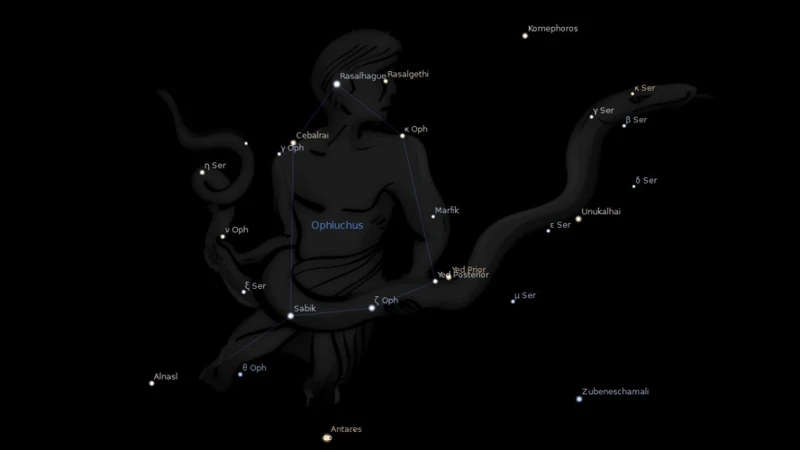
As we delve deeper into the exploration of the natal chart, we encounter the intriguing concept of aspects. In astrology, aspects refer to the angles formed between planets within the natal chart, which indicate the energetic relationship and interaction between these celestial bodies. These aspects provide valuable insights into various aspects of our lives, such as personality traits, relationships, and life events. They paint a dynamic picture of our unique cosmic configuration and shed light on how different planetary energies intertwine and influence each other. Understanding the significance of aspects allows us to comprehend the intricate dance of planetary energies in our lives and provides a deeper layer of interpretation in natal chart analysis. By exploring the different types of aspects present, we can unlock hidden potentials, challenges, and opportunities that shape our life journey. To learn more about the types of aspects and their interpretations, continue reading.
1. Defining Aspects in Astrology
In astrology, aspects are the angular relationships formed between planets, points, and angles in a natal chart. These aspects create a dynamic interaction between the celestial bodies, influencing the energies and potentials reflected in the chart. Defining aspects involve understanding the specific angles formed and the corresponding symbolism associated with each aspect. The most commonly used aspects in astrology include conjunctions, oppositions, trines, squares, sextiles, quincunxes, semi-squares, and semi-sextiles.
1. Conjunction: A conjunction occurs when two planets are within a close angle of each other, usually within 10 degrees. This aspect signifies a blending or merging of energies, where the qualities and characteristics of the planets involved intensify and unite.
2. Opposition: An opposition occurs when two planets are approximately 180 degrees apart. This aspect represents a polarity or tension, where the energies of the planets involved are in direct opposition. It often indicates a need to find balance and integration between conflicting forces.
3. Trine: A trine occurs when two planets are approximately 120 degrees apart. This aspect symbolizes harmony and flow between the energies of the planets involved. It is considered a positive aspect that bestows ease, creativity, and opportunities.
4. Square: A square occurs when two planets are approximately 90 degrees apart. This aspect signifies tension, challenges, and conflicts between the energies of the planets involved. It prompts growth through obstacles and demands resolution and action.
5. Sextile: A sextile occurs when two planets are approximately 60 degrees apart. This aspect represents opportunities, harmony, and cooperation between the energies of the planets involved. It provides a favorable environment for personal growth and development.
6. Quincunx: A quincunx occurs when two planets are approximately 150 degrees apart. This aspect suggests an adjustment or awkwardness between the energies of the planets involved. It presents a need for adaptation and making necessary changes for greater alignment.
7. Semi-square: A semi-square occurs when two planets are approximately 45 degrees apart. This aspect indicates minor challenges and friction between the energies of the planets involved. It requires adjustments and moderation to alleviate tension.
8. Semi-sextile: A semi-sextile occurs when two planets are approximately 30 degrees apart. This aspect signifies a subtle connection between the energies of the planets involved. It presents opportunities for growth and integration through minor adjustments.
Understanding these defining aspects in astrology provides a foundation for interpreting the complex dynamics within a natal chart. Each aspect carries its own unique symbolism and influences the individual’s personality, relationships, and life experiences. By analyzing the aspects, astrologers can gain deeper insights into the complexities of an individual’s life journey and offer guidance for personal growth and fulfillment.
2. Types of Aspects
In astrology, aspects refer to the angles formed between planets in a natal chart. They provide valuable insights into the dynamics and interactions between different planetary energies. There are several types of aspects that astrologers consider when analyzing a natal chart, each with its own unique qualities and influences.
1. Conjunction: A conjunction occurs when two planets are positioned very closely together, creating a powerful fusion of their energies. It signifies a blending and intensification of the planetary qualities involved. For example, a Sun-Moon conjunction represents a harmonious integration of the conscious self (Sun) and the emotional nature (Moon).
2. Opposition: An opposition is formed when two planets are directly across from each other in the natal chart. It highlights the tension and polarity between their energies. This aspect often symbolizes a need to find balance and integration between conflicting forces. For instance, a Venus-Mars opposition may reflect a desire for both love and independence, requiring a delicate balancing act in relationships.
3. Trine: The trine aspect occurs when two planets are approximately 120 degrees apart in the natal chart. It represents a harmonious flow of energy and an innate understanding between the planetary forces involved. Trines signify ease, creativity, and a natural alignment of the corresponding qualities. For example, a Jupiter-Uranus trine indicates a fortunate blend of expansion (Jupiter) and innovation (Uranus).
4. Square: A square is formed when two planets are about 90 degrees apart in the natal chart. It signifies a dynamic and challenging interaction between their energies. Squares represent tension, obstacles, and the need for growth and change. They often push individuals to overcome limitations and take action. A Sun-Mercury square, for instance, may indicate a struggle to express oneself effectively and a need for communication growth.
5. Sextile: The sextile aspect occurs when two planets are approximately 60 degrees apart in the natal chart. It represents opportunities and easy flow of energy between the planetary forces involved. Sextiles signify potential for growth, cooperation, and positive outcomes. For example, a Moon-Neptune sextile suggests a harmonious connection between emotions (Moon) and intuition (Neptune).
6. Quincunx: A quincunx happens when two planets are approximately 150 degrees apart in the natal chart. It indicates a subtle, complex, and often challenging interaction between their energies. Quincunxes suggest the need for adjustment, adaptation, and finding creative solutions. An example is a Venus-Pluto quincunx, which may bring themes of transformation and power struggles in relationships.
7. Semi-Square: The semi-square is formed when two planets are approximately 45 degrees apart in the natal chart. It represents a minor and often agitating aspect, creating a sense of restlessness and friction. Semi-squares can symbolize the need for adjustments and the integration of conflicting energies. For instance, a Mars-Saturn semi-square may bring a sense of frustration and the need for disciplined action.
8. Semi-Sextile: The semi-sextile occurs when two planets are approximately 30 degrees apart in the natal chart. It represents a subtle and harmonious connection between their energies, although less potent than a sextile. Semi-sextiles suggest potential for growth, cooperation, and the blending of complementary qualities. For example, a Venus-Mars semi-sextile may indicate the possibility of harmonizing love and desires.
Understanding the different types of aspects is crucial for interpreting the natal chart accurately. They provide valuable insights into the dynamics and nuances of planetary energies in an individual’s life. By recognizing and integrating these aspects, astrologers can gain a deeper understanding of an individual’s personality traits, strengths, challenges, and potential life experiences.
Interpreting Aspects in the Natal Chart
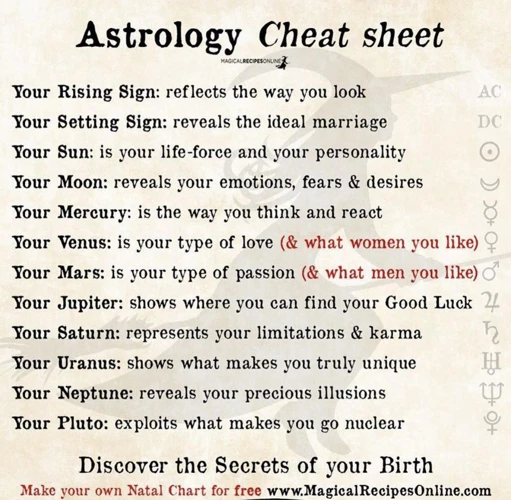
Interpreting aspects in the natal chart is like deciphering the secret language of the cosmos. Aspects refer to the angles formed between planets in the natal chart, which provide crucial insights into the dynamics and energies at play in an individual’s life. Major aspects, such as conjunctions, oppositions, trines, and squares, have profound meanings and can reveal important themes and challenges. These aspects create a cosmic dialogue, showcasing the interplay between different planetary energies and how they influence our personality and experiences. Minor aspects, on the other hand, offer more subtle nuances and influences. Whether it is the harmonious flow of a trine or the tension of a square, each aspect holds valuable information about our strengths, weaknesses, and potential areas of growth. By examining and understanding these aspects, we can gain a deeper understanding of ourselves and gain valuable insights into our life’s journey. So, let us embark on this astrological expedition and explore the intricacies of the natal chart’s aspects, unlocking the hidden wisdom within.
1. Major Aspects and Their Meanings
Major aspects in astrology are significant angles formed between planets in a natal chart. These aspects hold great importance in interpreting and understanding the dynamics of the individual’s life. Here are some of the major aspects and their meanings:
1. Conjunction: When two planets are in close proximity to each other, a conjunction occurs. This aspect signifies a fusion of energies, amplifying the traits and qualities represented by the planets involved. A conjunction can bring intensity and focus to specific areas of life, highlighting a potent blend of energies.
2. Opposition: An opposition occurs when two planets are directly across from each other in the natal chart. This aspect represents a polarity and a need for balance and integration. It often brings tension and challenges, but also offers opportunities for growth and integration of opposing forces. The opposition aspect signifies the need to find harmony between conflicting energies.
3. Trine: A trine forms when two planets are approximately 120 degrees apart. This aspect indicates a harmonious flow of energy between the involved planets. Trines often bring ease, abundance, and opportunities. They signify areas of natural talent and potential, indicating areas where things come effortlessly.
4. Square: A square occurs when two planets are approximately 90 degrees apart. This aspect represents tension, challenges, and internal conflicts. Squares create a sense of friction and require conscious effort and self-awareness to navigate. Despite the difficulties, squares also provide opportunities for growth and transformation.
5. Sextile: A sextile forms when two planets are approximately 60 degrees apart. This aspect represents opportunities and positive connections between the planets involved. Sextiles bring creative and harmonious energies, often indicating areas of potential and ease.
6. Quincunx: A quincunx, also known as an inconjunct, occurs when two planets are approximately 150 degrees apart. This aspect represents an imbalance or adjustment that needs to be made between the energies of the planets involved. Quincunxes often bring a sense of discomfort or unease, but they also provide valuable insights and opportunities for growth.
7. Semi-Square: A semi-square forms when two planets are approximately 45 degrees apart. This aspect signifies a minor level of tension and can bring frustration and irritability. It calls for adjustments and self-reflection to find resolution and harmony.
8. Semi-Sextile: A semi-sextile occurs when two planets are approximately 30 degrees apart. This aspect represents a subtle connection and interaction between the planets involved. It brings opportunities for growth and integration, although the effects may be more subtle compared to other major aspects.
Understanding these major aspects in the natal chart provides valuable insights into the interplay of energies and potentials in an individual’s life. By recognizing and interpreting these aspects, astrologers and individuals can gain a deeper understanding of their strengths, challenges, and opportunities for personal growth and development.
2. Minor Aspects and Their Significance
Minor aspects in astrology are considered to be less influential compared to the major aspects, but they still provide valuable insights into the nuances of our natal chart. These aspects, which include the semi-sextile, quincunx, semi-square, and sesquiquadrate, reveal subtle energies and connections between planets that may shape our personality and experiences.
The semi-sextile aspect occurs when two planets are approximately 30 degrees apart. It signifies a gentle connection, offering opportunities for growth and adaptation through small challenges and adjustments. This aspect encourages us to make minor changes in our lives to bring about positive transformations.
The quincunx aspect, also known as the inconjunct, occurs when two planets are approximately 150 degrees apart. It represents a sense of imbalance and tension, often leading to feelings of discomfort and a need for adjustment. The quincunx aspect prompts us to find creative solutions and make necessary changes to restore harmony and equilibrium in our lives.
The semi-square aspect occurs when two planets are approximately 45 degrees apart. It presents a challenging energy that pushes us to take action and confront obstacles. This aspect indicates a need for perseverance and determination to overcome difficulties and achieve personal growth.
Lastly, the sesquiquadrate aspect occurs when two planets are approximately 135 degrees apart. It represents a tense and frictional energy that requires us to confront and address conflicting aspects of our lives. The sesquiquadrate aspect encourages self-reflection and the integration of opposing forces to find inner harmony and growth.
Although minor aspects may have a lesser impact compared to major aspects, they should not be overlooked in the analysis of a natal chart. They provide valuable details and nuances that contribute to a more comprehensive understanding of an individual’s astrological profile. By considering both major and minor aspects, astrologers can gain deeper insights into the complexities of an individual’s personality, relationships, and life path.
Exploring Specific Aspects

Exploring specific aspects in a natal chart unveils the intricate dance of planetary energies and their influence on our lives. Aspects are the angles formed between planets, revealing unique dynamics and interactions. Each aspect carries its own significance and impacts various aspects of our personality and experiences. Here are some of the key aspects to consider when delving into the natal chart:
1. The Conjunction: This aspect occurs when two planets are close together, amplifying their energies and creating a fusion of their qualities. It signifies a potent blending and intensification of characteristics related to the planets involved.
2. The Opposition: When two planets are positioned across from each other, they form an opposition. This aspect represents a polarizing dynamic, where the energies of the planets may either clash or complement each other, highlighting the need for balance and integration.
3. The Trine: Trines occur when two planets are approximately 120 degrees apart, forming a harmonious aspect. This aspect signifies a flow of energy, ease, and support between the involved planets, often indicating talents, creativity, and favorable circumstances.
4. The Square: Squares manifest when two planets are about 90 degrees apart, creating a challenging and dynamic aspect. This aspect signifies tension, obstacles, and conflict, but it also presents opportunities for growth, transformation, and breakthroughs.
5. The Sextile: Sextiles occur when two planets are approximately 60 degrees apart, forming a positive and flowing aspect. This aspect signifies opportunities, cooperation, and potential for growth, often facilitating ease in communication and collaboration.
6. The Quincunx: A quincunx forms when two planets are about 150 degrees apart, creating an aspect that requires adjustment and adaptation. This aspect represents a subtle and complex connection, highlighting the need for flexibility and integration of the energies involved.
7. The Semi-Square: Semi-squares are formed when two planets are approximately 45 degrees apart. This aspect signifies tension, irritations, and challenges that prompt us to take action and make necessary adjustments.
8. The Semi-Sextile: Semi-sextiles occur when two planets are about 30 degrees apart, creating a subtle and gentle influence. This aspect signifies opportunities for growth and expansion that may require some effort and adjustment to fully utilize.
By understanding and interpreting these various aspects within the natal chart, we gain deeper insights into the complexities of our personalities, relationships, and life experiences. Exploring these aspects can provide valuable guidance for self-discovery, personal growth, and navigating life’s challenges and opportunities.
1. The Conjunction
The Conjunction is a powerful aspect in astrology where two or more planets align in close proximity, merging their energies and creating a potent blend. When planets are in conjunction, they share the same zodiac sign and occupy a similar degree in the natal chart. This alignment intensifies the influence of the planets involved, as their energies become intertwined. The Conjunction signifies a fusion of these planetary energies, resulting in a heightened focus on the qualities and themes represented by the involved planets.
The impact of a conjunction depends on the specific planets involved and the zodiac sign in which the conjunction occurs. For example, a conjunction between the Sun and Moon represents the New Moon phase, symbolizing new beginnings and a fresh start. This aspect is particularly significant in matters related to self-expression, emotions, and personal growth.
Conjunctions can occur between any combination of planets in a natal chart, such as Mercury and Venus, Mars and Jupiter, or Saturn and Pluto, each bringing its unique flavor and emphasis to the aspect. The nature of the involved planets determines the areas of life that will be most affected by the conjunction. For instance, a conjunction involving Mars and Jupiter may amplify ambition, drive, and motivation, potentially leading to great success in career or personal endeavors.
It is important to consider both the positive and negative manifestations of a conjunction. While it can bring great strength and synergy, it can also lead to a blending of energies that may result in challenges or internal conflicts. For example, a conjunction between Venus and Pluto may indicate intense relationships with deep emotional undertones, but it can also bring about power struggles or obsessions.
Understanding the specific dynamics and potential of a conjunction in a natal chart requires a holistic analysis of the individual’s unique astrological makeup. Exploring the aspects in a Natal Chart allows us to uncover the deeper layers of our personality, motivations, and potential challenges. The Ophiuchus traits and relationships can also offer further insights into how specific conjunctions may manifest in different individuals.
The Conjunction aspect in astrology is a powerful force that merges the energies of planets, amplifying their influence in the natal chart. By understanding the specific qualities and dynamics of a conjunction, we can gain valuable insights into our personalities, relationships, and life themes. It is through a comprehensive exploration of these aspects that we can harness the full potential of our natal charts and navigate our lives with purpose and self-awareness.
2. The Opposition
The opposition is a significant aspect in astrology that occurs when two planets are approximately 180 degrees apart in the natal chart. This alignment creates a dynamic tension between the energies represented by the planets involved. The opposition is symbolized by a straight line that connects two planets, highlighting the need for balance and integration. It brings forth a sense of contrast and duality, often presenting us with dichotomies or opposing forces in our lives that require resolution.
When analyzing the opposition, it is important to understand the specific planets involved and the zodiac signs in which they reside. This aspect signifies a relationship between two opposing principles, such as the self and others, or different areas of life. For example, an opposition between the Sun and Moon may represent a conflict between our conscious ego (Sun) and our emotional needs (Moon), requiring us to find a harmonious balance between them.
The opposition aspect can also manifest as external relationships or situations that mirror the duality within ourselves. These opposing forces can be seen as complementary, representing two sides of the same coin, and ultimately providing opportunities for growth and integration. It invites us to find harmony through embracing both sides of the equation.
However, the opposition can also bring about tension, conflicts, and polarization if its energies are not consciously integrated. It may indicate inner struggles, power struggles in relationships, or a push-pull dynamic that requires conscious effort to find common ground and achieve a sense of equilibrium.
To navigate the opposition aspect, self-awareness and finding common ground are crucial. This may involve recognizing the ways in which the opposing forces manifest within ourselves and actively seeking ways to integrate them harmoniously. The opposition signifies a call for balance and compromise, urging us to embrace the unity of opposites and transcend dualistic thinking.
The opposition is a powerful aspect in astrology that highlights the need for balance, integration, and resolution of opposing forces. Understanding and working with this aspect in our natal chart can provide valuable insights into the dualities and conflicts within ourselves and our external relationships. It encourages personal growth, self-awareness, and the quest for harmonious integration of opposing energies. To delve deeper into the world of celestial phenomena, you may want to explore how eclipses occur here.
3. The Trine
The trine is one of the most harmonious aspects in astrology, symbolizing ease, flow, and innate talents. When two planets are trine to each other, they are approximately 120 degrees apart. This aspect creates a strong connection between the planets involved, fostering a sense of natural affinity and cooperation. The trine encourages the expression of positive qualities and facilitates a smooth exchange of energy. It signifies opportunities, blessings, and abundance in the areas of life represented by the planets in question. With the trine, the planets effortlessly support each other, creating a harmonious synergy that enhances their individual powers. This aspect indicates a natural talent or skill that comes easily to the individual, allowing them to excel in specific areas without much effort. It is important to note that while the trine brings inherent gifts, it can also lead to complacency if not consciously utilized. To make the most of the trine aspect, individuals are encouraged to embrace and cultivate the talents it bestows. By actively channeling and developing these abilities, one can unlock their full potential and experience growth and fulfillment in the corresponding areas of life.
4. The Square
The square is one of the most powerful and dynamic aspects in astrology, characterized by a 90-degree angle between two planets or points in a natal chart. This aspect symbolizes tension, conflict, and challenges in our lives. When two planets form a square, their energies clash, creating inner turmoil and obstacles that require resolution. The square aspect pushes us out of our comfort zones, urging personal growth and transformation. It challenges us to address conflicts and find innovative solutions to problems. Although the square aspect can be disruptive, it also serves as a catalyst for change and growth. It ignites motivation and drives us to take action. People with prominent square aspects in their charts often possess a strong drive to overcome obstacles and achieve their goals. The key to working with squares is to recognize the lessons and opportunities for growth they present. By embracing the challenges, we can harness the transformative power of the square aspect and find inner strength and resilience.
5. The Sextile
The sextile is an aspect in astrology that occurs when two planets are approximately 60 degrees apart from each other. It is considered a harmonious aspect, indicating opportunities, creativity, and ease of communication between the planets involved. When two planets form a sextile in the natal chart, they work together in a cooperative manner, supporting and enhancing each other’s energies.
The sextile represents a gentle flow of energy that encourages collaboration, growth, and positive outcomes. It brings forth a sense of ease and natural talents in the areas governed by the planets involved. This aspect is associated with opportunities, often presenting themselves as doors opening or connections falling into place effortlessly.
When interpreting the sextile in a natal chart, it is important to consider the planets and signs involved. Each sextile combination brings unique qualities and potentials. For example, a sextile between Venus and Mars may indicate harmonious relationships, passion, and creativity. On the other hand, a sextile between Mercury and Uranus could suggest innovative thinking, originality, and intellectual abilities.
To make the most of the sextile aspect, individuals are encouraged to embrace the opportunities it presents. This may involve actively seeking out collaborations, exploring creative outlets, or utilizing their natural talents. The sextile offers a supportive energy that can propel individuals towards personal growth and success.
The sextile is a positive aspect in astrology, promoting harmonious connections and the utilization of innate abilities. It signifies potential opportunities and serves as a reminder to embrace the flow of energy that is readily available. By recognizing and working with the sextile aspect in the natal chart, individuals can harness its positive qualities and find fulfillment in various aspects of life.
6. The Quincunx
The Quincunx, also known as the Inconjunct aspect, is a fascinating and complex aspect in astrology. It occurs when two planets are approximately 150 degrees apart, creating a difficult and uneasy connection between them. This aspect often brings together planets in signs that have little in common, resulting in a challenging blend of energies. The Quincunx signifies a sense of imbalance and discomfort, as the planets involved struggle to find harmony and integration.
In terms of interpretation, the Quincunx can manifest in various ways. It may represent internal conflicts or a series of adjustments that need to be made in order to find a resolution. This aspect often indicates a need for adaptation and flexibility in order to navigate complex situations. Individuals with the Quincunx aspect in their natal chart may find themselves constantly adjusting and readjusting their approach to life and relationships.
The Quincunx can bring forth feelings of frustration and confusion. The planets involved in this aspect may seem to be at odds with each other, causing tension and a sense of being torn between different areas of life. It necessitates finding creative solutions and embracing a mindset of growth and transformation.
The Quincunx can challenge us to confront our unresolved issues and work towards finding resolution and balance. It may urge us to address the areas in our lives that are out of alignment and make necessary adjustments to foster personal growth and harmony.
Ultimately, the Quincunx aspect encourages us to embrace change, adapt to new circumstances, and find innovative ways to integrate seemingly incompatible energies. It serves as a catalyst for personal growth and self-improvement, pushing us to navigate the complexities of life with resilience and an open mind.
The Quincunx aspect is a paradoxical and intriguing aspect in astrology. Its dynamic and challenging nature offers opportunities for personal growth and transformation. Embracing its energy can lead to valuable insights and the development of a flexible and adaptable approach to life’s challenges.
7. The Semi-Square
The semi-square is an aspect in astrology that occurs when two planets are approximately 45 degrees apart. This aspect creates a tense and challenging energy between the planets involved. It is considered a minor aspect but still holds significance in understanding the dynamics of a natal chart.
The semi-square represents internal conflicts, friction, and a sense of restlessness in our lives. It brings about a constant push and pull between the planets, causing tension and a need for resolution. This aspect can manifest as inner frustrations, a drive for change, or a desire to overcome obstacles.
In terms of interpretation, the semi-square can signify areas of our lives where we experience difficulty, resistance, or obstacles. It indicates areas where we may need to work harder or make adjustments in order to achieve our goals. The energies of the planets involved may clash, resulting in inner tension and conflict.
For example, a semi-square between Venus and Mars in a natal chart could indicate challenges in relationships. This aspect suggests a struggle between our desires for harmony and passion, leading to potential conflicts or power struggles within partnerships.
It is important to remember that while the semi-square may present challenges, it also offers an opportunity for personal growth and development. By acknowledging and addressing the areas of tension represented by this aspect, we can learn valuable lessons and find ways to overcome obstacles in our lives.
To fully understand the impact of the semi-square in a natal chart, it is essential to consider the individual planets involved, their zodiac signs, and the houses they occupy. This combination of factors adds layers of complexity to the interpretation, revealing specific areas of tension and potential growth in an individual’s life.
The semi-square aspect in astrology represents internal conflicts and challenges within the natal chart. It highlights areas where we may face obstacles and need to exert additional effort to overcome them. By recognizing the tension brought about by this aspect, we can navigate these challenges and find opportunities for personal growth and development.
8. The Semi-Sextile
The Semi-Sextile is an aspect in astrology that occurs when two planets are approximately 30 degrees apart. This aspect brings together the energies of two planets that are in adjacent zodiac signs. The Semi-Sextile creates a subtle connection between the planets involved, often leading to opportunities for growth and integration.
In terms of interpretation, the Semi-Sextile combines the qualities of both planets, blending their attributes in a harmonious yet understated manner. It can be seen as a gentle nudge or an invitation to explore the synergies between the planets involved. The influence of the Semi-Sextile is usually felt as a supportive and encouraging energy that facilitates cooperation and understanding.
Although the Semi-Sextile is considered a minor aspect, it holds significance in a natal chart analysis. It represents an opportunity for personal development, as it encourages the blending of different aspects of our personality. The harmonious nature of this aspect allows for the integration of seemingly unrelated qualities, helping us find balance and navigate through life’s challenges with greater ease.
An example of the Semi-Sextile can be seen between Mars in Aries and Mercury in Taurus. This combination brings together the assertive and passionate energy of Mars with the practical and grounded nature of Mercury. As a result, individuals with this aspect may possess strong communication skills and the ability to assert themselves diplomatically.
The Semi-Sextile is a valuable aspect in astrology that fosters integration and personal growth. While it may not be as pronounced as some of the major aspects, its subtle influence offers opportunities for harmonious cooperation and the blending of diverse qualities. Exploring the dynamics of the Semi-Sextile in your natal chart can provide valuable insights into how different aspects of your personality can work together to create a balanced and fulfilling life.
Benefits of Analyzing Aspects
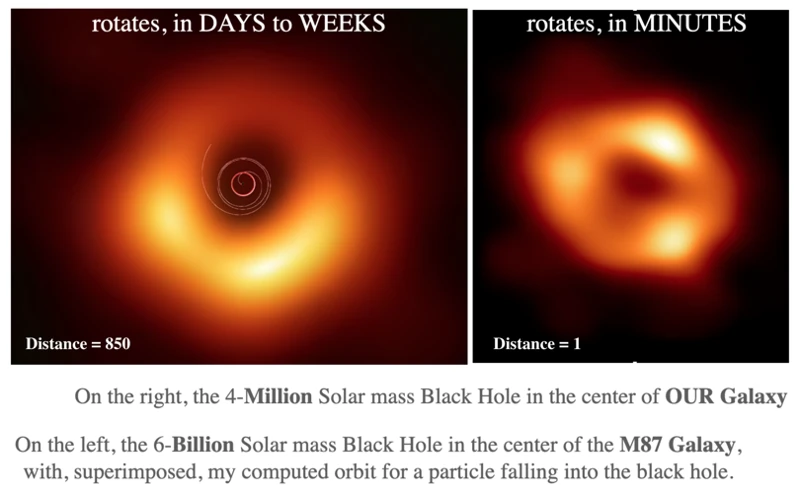
Analyzing the aspects in a natal chart can provide a plethora of benefits in understanding one’s unique astrological makeup. By exploring the intricate connections between the planets and angles, we gain valuable insights into our strengths, challenges, and potential areas for growth. Here are some key benefits of analyzing aspects:
1. Self-Awareness and Personal Development: Studying the aspects in our natal chart helps us become more aware of our inner motivations, desires, and patterns of behavior. It shines a light on our strengths and areas that may need improvement, allowing us to embark on a journey of self-discovery and personal growth.
2. Relationship Dynamics: Analyzing the aspects in our natal chart can shed light on our compatibility with others and provide insights into our relationship dynamics. It helps us understand the strengths and challenges we may face in different types of relationships, be it romantic, familial, or professional. This knowledge allows us to approach relationships with a deeper understanding and navigate through potential conflicts.
3. Career and Life Path Guidance: The aspects in our natal chart can provide valuable guidance when it comes to choosing a career and finding our life’s purpose. Certain aspects may indicate natural talents and inclinations, while others may uncover potential challenges or areas of professional growth. By analyzing these aspects, we can align our choices and actions with our cosmic blueprint, leading to a more fulfilling and purpose-driven life.
4. Emotional and Psychological Insight: Aspects offer a window into our emotional and psychological landscape. They reveal patterns and tendencies that shape our thoughts, feelings, and reactions. By exploring these aspects, we can gain a better understanding of ourselves on a deep level, enabling us to navigate our emotional landscape with greater compassion and awareness.
5. Timing and Forecasting: Analyzing aspects can also aid in timing and forecasting future events. Transiting planets form aspects to the planets in our natal chart, triggering various energies and potentials. By understanding these aspects, we can anticipate potential opportunities or challenges that may arise, allowing us to make informed decisions and take advantage of favorable cosmic alignments.
Whether it be gaining self-awareness, navigating relationships, finding our life’s purpose, understanding our emotions, or foreseeing potential events, analyzing the aspects in a natal chart offers a wide range of benefits. It empowers us to embrace our unique astrological makeup and harness the cosmic energies to lead a more fulfilling and purposeful life.
Common Misconceptions
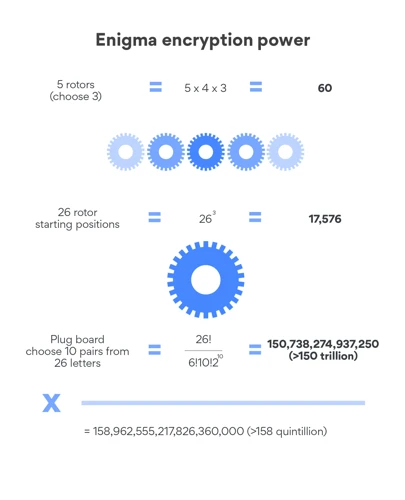
When it comes to interpreting aspects in a natal chart, there are several common misconceptions that need to be addressed. First, there is a widespread misunderstanding about the aspect strength. Contrary to popular belief, the strength of an aspect is not solely determined by its exactness or tightness but rather by the planets involved and their individual placements within the chart. The second misconception relates to viewing aspects as purely positive or negative. While some aspects may carry challenging energies and require conscious effort to navigate, they often serve as catalysts for growth and transformation. Conversely, seemingly harmonious aspects may not always manifest positively if not utilized consciously. It is essential to approach aspects with an open mind and understand that their interpretation depends on the overall context of the chart and the individual’s unique experiences. By dispelling these misconceptions, we can embrace a more holistic understanding of the complexity and nuance of aspects in astrology.
1. Aspect Strength
Aspect strength refers to the degree of influence and intensity that an aspect carries in a natal chart. It determines the level of impact that a particular aspect has on a person’s life and experiences. The strength of an aspect is determined by several factors, including the orbs, or the degree of separation between the planets involved in the aspect, and the aspects’ relationship with other planets or points in the chart.
There are different classifications of aspect strength, ranging from strong to weak. Here are some key factors that contribute to aspect strength:
1. Orb: The orb refers to the allowable degree of separation between planets for an aspect to be considered significant. Generally, a tighter orb indicates a stronger aspect. For example, a conjunction with an orb of less than 2 degrees will have a more pronounced influence compared to a conjunction with an orb of 8 degrees.
2. Aspect Type: Certain aspects carry more weight and intensity than others. Major aspects, such as the conjunction, opposition, and square, are considered stronger and tend to have more noticeable effects. On the other hand, minor aspects, like the semi-square or semi-sextile, have a subtler influence.
3. Planetary Strength: The overall strength and condition of the planets involved in an aspect also play a role in determining aspect strength. Planets in their own sign or exalted are considered stronger, while planets in detriment or fall may weaken the aspect.
4. Reception: Reception occurs when planets are in each other’s signs of rulership, exaltation, or detriment. Reception can amplify or soften the impact of an aspect, depending on whether it is harmonious or challenging.
Understanding the strength of aspects within a natal chart provides valuable insights into the dynamics and potential impact they have on an individual’s life. It helps astrologers and enthusiasts gauge the intensity and significance of different aspects, allowing for more accurate interpretations and predictions. By analyzing the strength of aspects, we can gain a deeper understanding of how planetary energies interact and contribute to the overall astrological makeup of an individual.
2. Positive and Negative Aspects
When analyzing the aspects in a natal chart, it is important to address the notion of positive and negative aspects. However, it is crucial to note that the terms “positive” and “negative” are not used in a value judgment or moral sense, but rather to describe the nature of the aspect and its potential manifestations. Positive aspects generally refer to harmonious and beneficial connections between planets. These aspects indicate ease, flow, and favorable outcomes in the areas of life ruled by the planets involved. They can signify talents, opportunities, and positive traits that are easily expressed and integrated into one’s personality. Some examples of positive aspects include the trine, sextile, and conjunction.
On the other hand, negative aspects signify more challenging or conflicting energies between planets. They may indicate areas of life that require growth, awareness, and transformation. Negative aspects can bring about obstacles, tension, and lessons to be learned. They may manifest as inner conflicts or external challenges that need to be addressed and resolved. Examples of negative aspects include the square and the opposition.
However, it is important to understand that both positive and negative aspects are integral parts of the human experience and serve a purpose in our personal growth and development. Negative aspects can act as catalysts for change, prompting us to dig deeper, discover our inner strength, and make necessary adjustments in our lives. Likewise, positive aspects provide us with blessings and opportunities that can be harnessed for personal and spiritual growth. Ultimately, the combination of positive and negative aspects in a natal chart creates a dynamic and rich tapestry of experiences that shape our journey through life.
Tools for Analyzing Aspects
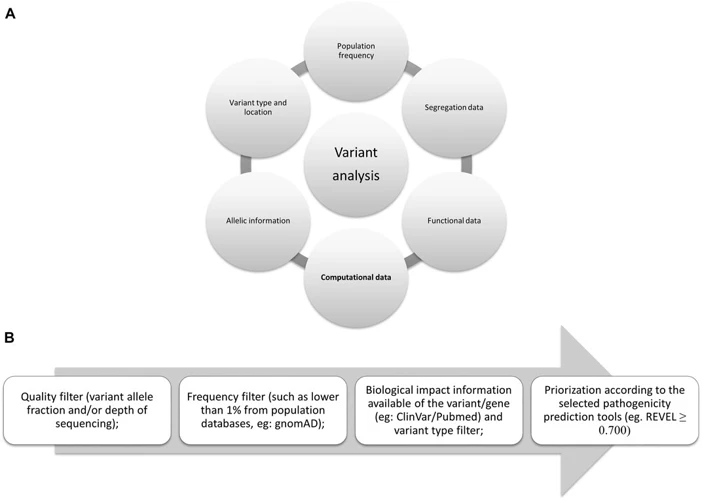
When it comes to analyzing aspects in a natal chart, having the right tools can greatly enhance the accuracy and depth of your interpretation. Astrological software is a valuable tool that provides detailed calculations and generates comprehensive natal charts with ease. It allows you to explore the aspects visually, making it easier to identify patterns and relationships between planets. Another useful tool is the aspect grid, which presents a visual representation of the aspects in a tabular format. This grid helps you quickly analyze the angles between planets and their significance. Additionally, an ephemeris is a handy reference book or online resource that provides the positions of celestial bodies at specific dates and times. It allows you to track planetary movements and pinpoint exact aspect configurations. By utilizing these tools, you can delve deeper into the complex web of aspects within a natal chart and gain a more profound understanding of their impact on an individual’s life journey.
1. Astrological Software
Astrological software plays a crucial role in analyzing and interpreting aspects in a natal chart. It provides astrologers and enthusiasts with a vast array of tools and resources to accurately calculate and visualize the chart. Here are some key features and benefits of using astrological software for analyzing aspects:
1. Chart Calculation: Astrological software automates the complex calculations involved in generating a natal chart. It swiftly calculates the positions of planets, houses, and signs based on the exact birth details provided. This saves time and ensures accuracy in creating the chart.
2. Aspect Interpretation: The software generates aspect grids or tables that provide a comprehensive view of the aspects present in the natal chart. These grids highlight the angles formed between planets, offering insights into the dynamics and influences between celestial bodies.
3. Customization Options: Astrological software often allows customization of various chart elements such as house systems, aspect orbs, and zodiac options. Users can personalize these settings to align with their preferred astrological methods and techniques.
4. Transit and Progression Tracking: Many software programs provide features to track the movement of planets over time. This enables astrologers to analyze the current transits and progressions in relation to the natal chart, giving valuable insights into the unfolding of one’s life.
5. Additional Astrological Tools: Astrological software often includes additional tools like ephemeris, which provide detailed information on planetary positions for specific dates. These tools support advanced analysis and research, helping astrologers deepen their understanding of aspects.
Using astrological software empowers astrologers and enthusiasts to explore and interpret aspects in a natal chart more efficiently and accurately. It enhances the analytical process, enabling a deeper understanding of the connections between celestial bodies and the influence they exert on an individual’s life journey. Ultimately, the software serves as a valuable tool in unlocking the hidden wisdom and insights contained within the intricate patterns of the natal chart.
2. Aspect Grids and Ephemeris
Aspect grids and ephemeris are essential tools for astrologers and enthusiasts alike when it comes to analyzing and interpreting aspects in a natal chart. An aspect grid is a visual representation that displays the angles formed between planets in the chart. It allows for a quick and convenient way to identify and understand the connections between different planetary energies. The aspect grid typically includes symbols or colors to indicate the type and strength of each aspect, such as conjunct, trine, square, or opposition. By examining the aspect grid, astrologers can easily spot patterns or clusters of aspects that may hold particular significance in a person’s chart. It provides a holistic view of the relationships between planets and reveals the overall dynamics at play.
Ephemeris is a tabular representation that provides precise information about the celestial positions of planets at specific times or dates. In astrology, an ephemeris is commonly used to determine the exact degree and sign of a planet at the moment of birth, which is crucial for accurately constructing a natal chart. Modern ephemerides are based on sophisticated astronomical calculations and are available in digital format or as printed books. Astrologers can refer to ephemerides to track the movements of the planets over time and identify when certain aspects between planets will occur or have occurred. This information is vital for predicting upcoming transits and understanding the influence of planetary energies on an individual’s life.
By utilizing aspect grids and ephemeris together, astrologers can gain a comprehensive understanding of the aspects in a natal chart. The aspect grid helps visualize the interplay of planetary energies, while the ephemeris provides precise data on the current and historical positions of the planets. This combination facilitates a detailed analysis of how the aspects unfold and evolve over time, allowing for more accurate interpretations and predictions. Whether using digital or printed versions, having access to these tools is essential for any serious astrologer seeking to unlock the secrets held within the intricate web of aspects in a natal chart.
Personalized Aspect Analysis
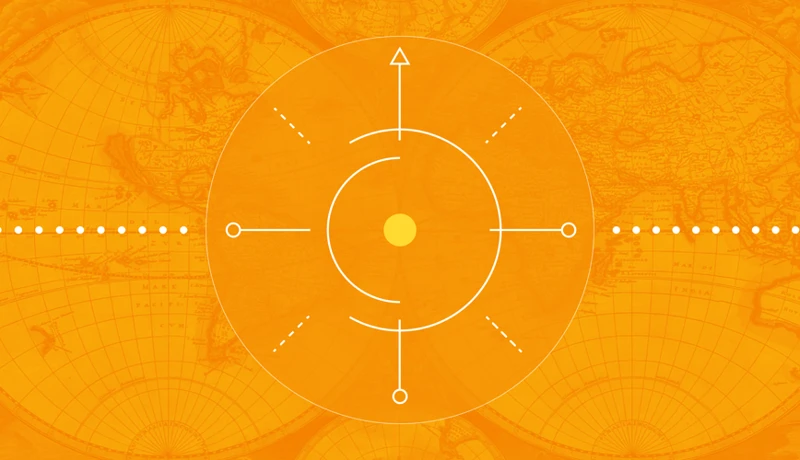
Personalized aspect analysis is a crucial step in unlocking the deeper layers of meaning within a natal chart. By examining the specific aspects formed between planets and points in the chart, we gain valuable insights into the dynamics and influences at play in an individual’s life. Each aspect carries its unique energy and symbolism, shaping the way we experience and express different parts of ourselves.
To perform a personalized aspect analysis, one needs to closely examine the planets involved, their signs, and the houses they reside in. The nature of the aspect is also crucial in understanding its impact. Is it a harmonious aspect, such as a trine or sextile, promoting ease and flow? Or is it a more challenging aspect, like a square or opposition, indicating tension and growth opportunities?
Interpreting aspects involves considering the planetary energies involved and how they interact with each other. For example, a Moon-Mercury conjunction may suggest a strong connection between emotions and communication, emphasizing the need for emotional expression through words. On the other hand, a Mars-Neptune square could indicate a potential struggle between assertiveness and confusion, requiring clear boundaries and assertiveness in handling dreams and illusions.
It’s essential to remember that personalized aspect analysis should always consider the chart as a whole, looking for patterns and themes that emerge from the interplay of various aspects. By understanding the unique combinations of aspects present in a natal chart, an astrologer or individual can gain greater clarity on strengths, challenges, and potential areas for growth and development.
Through personalized aspect analysis, we can refine our self-awareness, understand our motivations and behaviors, and discover how we can make the most of the cosmic energies influencing our lives. It offers a profound opportunity for personal growth, allowing individuals to harness their strengths, overcome challenges, and live in alignment with their true potential.
Personalized aspect analysis is the key to unlocking the intricate tapestry of a natal chart. By examining the specific planetary aspects, their nature, and the energy they bring, we gain deeper insights into ourselves and our life experiences. Utilizing this knowledge, we can navigate our paths with greater clarity, purpose, and self-awareness. So, let’s delve into the fascinating world of personal aspect analysis and discover the hidden gems that lie within our natal charts.
How to Make the Most of Aspects
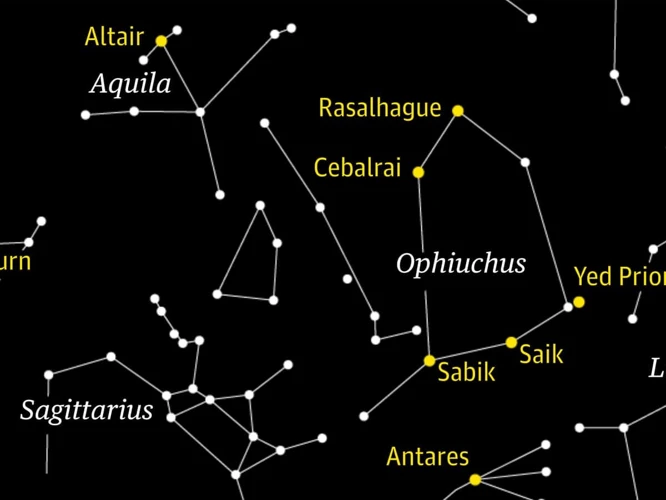
To fully harness the power of aspects within the natal chart, it is crucial to employ effective strategies and approaches. Here are three key ways to make the most of aspects:
1. Self-reflection and Awareness: Regularly introspect and reflect on the aspects in your natal chart. Develop self-awareness and contemplate how these aspects influence your thoughts, behaviors, and emotions.
2. Working with Challenging Aspects: Embrace the challenges presented by negative aspects as valuable opportunities for growth and transformation. Seek ways to channel their energies into constructive endeavors.
3. Harnessing the Power of Beneficial Aspects: Recognize and leverage the strengths offered by positive aspects. Utilize them to maximize your potential, enhance relationships, and unlock opportunities for success. By implementing these strategies, you can unlock the transformative potential of aspects and empower yourself on your cosmic journey.
1. Self-reflection and Awareness
Self-reflection and awareness play a crucial role in making the most of the aspects present in our natal chart. When we take the time to introspect and understand ourselves on a deeper level, we can truly harness the power of these celestial influences. Self-reflection involves turning our attention inward and examining our thoughts, emotions, and experiences. It allows us to gain insight into our patterns, desires, fears, and motivations. By bringing awareness to our strengths and weaknesses, we can consciously work on enhancing our positive traits and transforming our negative ones. Self-reflection also assists in recognizing the impact of our actions and choices on our relationships and life circumstances.
Awareness goes hand in hand with self-reflection. It involves being present in the moment and observing without judgment. Through awareness, we can become conscious of how certain aspects of our natal chart manifest in our lives. For example, if we have a challenging aspect between Mars and Saturn, we may notice patterns of frustration, obstacles, or tendencies towards self-discipline. By cultivating awareness, we can catch ourselves when we are falling into old patterns and make conscious choices to shift our behavior. This process of self-awareness enables us to align with the energies of the beneficial aspects in our natal chart, amplifying their positive manifestations.
By engaging in self-reflection and cultivating awareness, we can set the stage for personal growth and make conscious decisions that align with our true nature. It is a continuous practice that requires patience, curiosity, and self-compassion. Exploring the intricacies of the aspects in our natal chart becomes a journey of self-discovery and empowerment, allowing us to navigate life with clarity and purpose. So, make time for introspection, cultivate awareness, and embark on a path of self-transformation guided by the wisdom of the celestial energies within you.
2. Working with Challenging Aspects
When it comes to working with challenging aspects in a natal chart, it is essential to approach them with a sense of curiosity and openness. Challenging aspects, such as the square, opposition, and quincunx, often bring tension, conflict, and obstacles into our lives. However, they also provide valuable opportunities for growth, transformation, and self-awareness. Here are some strategies to navigate and harness the power of challenging aspects:
1. Acknowledge and Embrace: Recognize that challenging aspects are an integral part of your astrological makeup. Embrace them as valuable learning experiences that can spur personal growth and development.
2. Self-Reflection and Inner Work: Engage in self-reflection practices, such as journaling, meditation, or therapy, to delve deeper into the underlying patterns and motivations behind the challenges posed by these aspects. Explore how they may be connected to your past experiences or belief systems.
3. Seek Support: Reach out to trusted friends, mentors, or astrologers who can provide guidance and insights into working with challenging aspects. They can offer fresh perspectives and practical advice on how to navigate the difficulties presented by these aspects.
4. Transformative Practices: Explore practices like shadow work, visualization, or energy healing to address any unresolved issues or emotional blocks that arise from challenging aspects. These practices can help you integrate and transmute the energy of these aspects into personal empowerment and growth.
5. Shift Perspective: Instead of viewing challenging aspects as purely negative, try reframing them as opportunities for growth and transformation. Recognize that they provide contrast and contrast allows for greater appreciation of the positive aspects in life.
Remember, working with challenging aspects is an ongoing process, requiring patience, self-compassion, and a willingness to learn from the lessons they bring. By embracing these aspects and putting in the effort to work through them, you can transform challenges into stepping stones towards greater self-awareness, resilience, and personal evolution.
3. Harnessing the Power of Beneficial Aspects
Harnessing the power of beneficial aspects in astrology can greatly enhance our lives and personal growth. These aspects, also known as harmonious or positive aspects, occur when two planets form a supportive relationship in the natal chart. They bring about opportunities, talents, and favorable circumstances that can be utilized to our advantage. By understanding and working with these aspects, we can tap into their potential and harness their energy.
One of the most powerful and beneficial aspects is the trine. The trine occurs when two planets are approximately 120 degrees apart, forming an equilateral triangle in the natal chart. This aspect signifies ease, flow, and natural talents. It represents areas of life where things come effortlessly to us, where we excel without much effort. The trine brings blessings and opportunities, making it an advantageous aspect to have in one’s chart.
Another beneficial aspect is the sextile. The sextile occurs when two planets are approximately 60 degrees apart, forming a sextile angle in the natal chart. This aspect signifies cooperation, communication, and opportunities for growth. It represents areas of life where we can make positive connections, form partnerships, and expand our horizons. The sextile fosters harmony and enables us to find creative solutions to challenges.
Harnessing the power of these beneficial aspects involves recognizing and utilizing the opportunities they present. It requires self-awareness, focus, and conscious effort. By aligning ourselves with the energies of these aspects, we can maximize their potential and create positive outcomes in our lives. It is important to take advantage of the talents and gifts associated with these aspects, using them as tools for personal and spiritual growth.
To harness the power of beneficial aspects, we can engage in practices such as meditation, visualization, and setting intentions. These practices help us attune to the energies of the aspects and direct them towards our goals and aspirations. Additionally, cultivating gratitude and a positive mindset can amplify the benefits of these aspects, attracting more abundance and opportunities into our lives.
Harnessing the power of beneficial aspects in astrology allows us to tap into the positive energies and potentials that they offer. Whether it is the trine or the sextile, these aspects provide us with opportunities for growth, success, and fulfillment. By understanding their significance and actively working with them, we can leverage their power to create a more fulfilling and meaningful life.
Conclusion

After delving into the intricate aspects of a natal chart and exploring their meanings and significance, we come to the conclusion that this celestial blueprint holds invaluable insights into our true selves. Analyzing the aspects in a natal chart can provide us with a deeper understanding of our strengths, weaknesses, and life path. By recognizing and embracing the energies represented by these aspects, we can navigate our lives with greater self-awareness, purpose, and fulfillment.
In conclusion, exploring the aspects in a natal chart opens a doorway to self-discovery and personal growth. It allows us to tap into the rich tapestry of our unique cosmic makeup and gain profound insights into our personalities, relationships, and life journeys. Aspects provide us with a nuanced perspective on how different planetary energies interact within us, shaping our experiences and shaping our destinies. By harnessing the power of this knowledge, we can make informed decisions, forge meaningful connections, and align ourselves with our highest potential.
So, whether you are just beginning your astrological journey or have been immersed in the study of natal charts for years, remember to approach the exploration of aspects with curiosity and open-mindedness. Embrace the complexities of your natal chart, and allow them to guide you towards self-discovery and personal transformation. The natal chart is a tool of empowerment, offering us a profound understanding of ourselves and the universe we inhabit. May your exploration of aspects in a natal chart be a journey of self-exploration and enlightenment.
Frequently Asked Questions

1. What information does a natal chart provide?
A natal chart provides detailed information about the positioning of the planets, zodiac signs, and houses at the time of an individual’s birth. It gives insights into personality traits, strengths, weaknesses, potential life challenges, and opportunities for growth.
2. Can a natal chart accurately predict the future?
A natal chart doesn’t predict the future with certainty, but it offers valuable insights into an individual’s tendencies, inclinations, and potential life experiences. It serves as a tool for self-awareness, understanding patterns, and making informed choices in the present.
3. What are the major aspects in a natal chart?
The major aspects in a natal chart include the conjunction, opposition, trine, and square. These aspects represent powerful connections and influences between planets, indicating significant themes and energies in an individual’s life.
4. How do minor aspects affect the interpretation of a natal chart?
Minor aspects, such as the sextile, quincunx, semi-square, and semi-sextile, bring subtle influences and nuances to the interpretation of a natal chart. While they may not be as intense as major aspects, they offer additional layers of insight into an individual’s characteristics and experiences.
5. Can aspects in a natal chart change over time?
No, the aspects in a natal chart remain fixed and do not change over time. However, the transits, which occur as planets continue their movement in the sky, form dynamic angles with the planets in the natal chart, creating new influences and opportunities for growth.
6. How can analyzing aspects in a natal chart benefit an individual?
Analyzing aspects in a natal chart can provide individuals with a deeper understanding of their strengths, challenges, and potential life experiences. It allows for self-reflection, personal growth, and making conscious choices aligned with one’s true nature.
7. Are all aspects in a natal chart equally significant?
While all aspects hold some level of significance, the major aspects tend to have a more prominent influence on an individual’s life. They indicate powerful connections and energies, shaping core aspects of personality and life experiences.
8. How can one work with challenging aspects in their natal chart?
Working with challenging aspects in a natal chart involves acknowledging them and embracing the lessons they present. It requires self-awareness, personal growth, and utilizing various healing modalities to transform the negative aspects into sources of strength and wisdom.
9. What tools can aid in analyzing aspects in a natal chart?
Astrological software can provide detailed interpretations and generate natal charts with ease. Additionally, aspect grids and ephemeris, which display the positions of celestial bodies at specific times, can assist in analyzing aspects and their significance.
10. How can aspects in a natal chart be used to enhance relationships?
Understanding the aspects in a natal chart can provide insights into compatibility and potential challenges within relationships. By recognizing the strengths and weaknesses indicated by the aspects, individuals can foster better communication, understanding, and harmony in their relationships.
References
- The Aspects in Astrology. Understanding the dynamics and…
- The Complete Guide to Astrological Aspects
- Unlocking the Empathic Soul: Exploring Natal Chart Aspects
Frequently Asked Questions

1. What is the difference between a natal chart and a horoscope?
A natal chart is a map of the planets’ positions at the exact moment of a person’s birth, while a horoscope is a prediction or interpretation of the natal chart based on astrological principles.
2. Can aspects in a natal chart change over time?
No, the aspects in a natal chart remain fixed throughout a person’s life. However, the transits of the planets can create temporary aspects that influence the natal chart.
3. Are some aspects more influential than others in a natal chart?
Yes, some aspects are considered more influential than others. Major aspects, such as the conjunction and opposition, have a stronger impact on a person’s personality and life experiences.
4. Can aspects in a natal chart indicate compatibility in relationships?
Yes, aspects between two individuals’ natal charts can provide insights into their compatibility. Harmonious aspects, like the trine and sextile, suggest ease and harmony, while challenging aspects, like the square and quincunx, may indicate tension and growth opportunities.
5. How can analyzing aspects in a natal chart help in personal growth?
Studying the aspects in a natal chart can provide valuable insights into one’s strengths, challenges, and potential. It allows individuals to understand themselves better and work towards personal growth and self-improvement.
6. Can aspects in a natal chart determine career paths?
While aspects in a natal chart cannot specifically determine career paths, they can indicate inclinations, talents, and areas of interest that may guide individuals in choosing suitable career paths.
7. Are there any positive aspects in a natal chart?
Yes, there are several positive aspects in a natal chart, such as the trine and sextile. These harmonious aspects often bring ease, talents, and positive opportunities into a person’s life.
8. Can challenging aspects in a natal chart be beneficial?
Yes, challenging aspects, like the square and opposition, can provide valuable lessons and opportunities for growth. They may push individuals out of their comfort zones and motivate them to overcome obstacles.
9. Are there any tools available to analyze aspects in a natal chart?
Astrological software and aspect grids or ephemeris are common tools used to analyze aspects in a natal chart. These tools provide detailed information about planetary positions and the aspects formed.
10. How can one make the most of the aspects in their natal chart?
One can make the most of the aspects in their natal chart by engaging in self-reflection and awareness, working on challenging aspects, and harnessing the power of beneficial aspects. Understanding and embracing the energies of the aspects can lead to personal growth and fulfillment.







